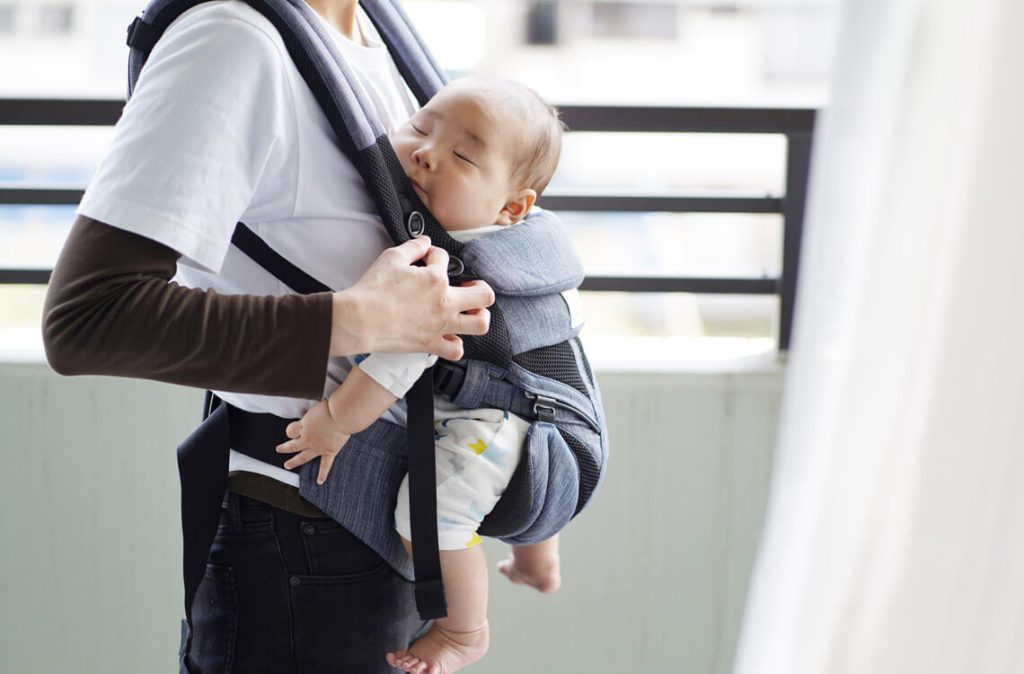Put a sleepy newborn against your chest, zip or wrap them close, and something quietly useful happens.
Babywearing is more than a trending parenting accessory. It is an old human practice with surprisingly modern payoffs.
Across cultures and eras, caregivers have carried infants close to their bodies because it works: babies settle, parents get a second arm, and daily life keeps moving.
The Close Comfort of Carrying
If you have ever wondered why a fussy baby calms instantly in a sling, you are not imagining it.
Studies show that carrying a baby frequently can significantly reduce infant crying and fussiness.
In a randomised trial, babies who were carried more cried far less during the early, peak-fuss weeks.
That is the kind of immediate, practical benefit that turns skeptics into converts.
How Babywearing Helps Babies
Being carried is not just about quieting a cry. Close contact supports infants’ physiological regulation.
Studies of parent and infant heart rates show signs of autonomic co-regulation during babywearing, meaning the caregiver’s rhythm helps steady the baby’s rhythm.
Skin contact and upright positioning can also affect body temperature and make thermal regulation easier for tiny bodies.
These are not dramatic miracles, but they add up: calmer nervous systems, steadier sleep, and fewer frantic evenings.
How Babywearing Helps Parents
The benefits are not one-sided. Carriers free up caregivers’ hands so they can do chores, hold another child, or simply breathe.
That practical freedom can transform the day from a juggling act into something manageable.
Using a carrier helps support breastfeeding duration.
Recent trials show infant carriers can increase rates of breastfeeding and expressed milk feeding at six months postpartum, which matters for both infant health and maternal confidence.
The Science Behind the Snuggle
If you like neuroscience, babywearing delivers nice anecdotes.
Research shows changes in parents’ neural responses after periods of close carrying, including increased sensitivity to infant cues in certain brain regions.
At the hormonal level, skin-to-skin and close contact influence oxytocin and stress markers, promoting calming loops for both parties.
These biological nudges are why carrying feels emotionally rewarding and why, for many, it deepens the sense of attachment.
Practical Tips and Safety Notes
Babywearing is versatile, but it must be done safely.
Use ergonomic carriers that support the baby’s hips and keep the face visible and airway clear.
Dress your baby appropriately for the temperature—their skin can warm more when held close—so layer thoughtfully.
Many pediatric and orthopedic sources recommend babywearing as a way to promote closeness and soothe infants, provided caregivers follow safety guidance and select carriers that fit both parent and child.
Making Like a Kangaroo
Babywearing is not magic, and it is not a miracle cure.
It is a low-tech practice with measurable, repeatable benefits for many families.
It soothes, it aids feeding, it helps regulate tiny bodies, and it gives caregivers a second pair of hands and a sense of closeness.
If you try it, do so with attention to safety and comfort. If you do not, that is fine too.
Either way, the evidence gives parents a nice option: carry your baby if it helps both of you feel better.
Science is still unpacking the full picture, but the simple daily truth is clear—being close often makes things easier for everyone.
Disclaimer: The information provided in this article is for informational purposes only and should not be considered as medical advice from Motherhood. For any health-related concerns, it is advisable to consult with a qualified healthcare professional or medical practitioner.
For more insightful stories and fun recipes, stay tuned to Motherhood Story!
